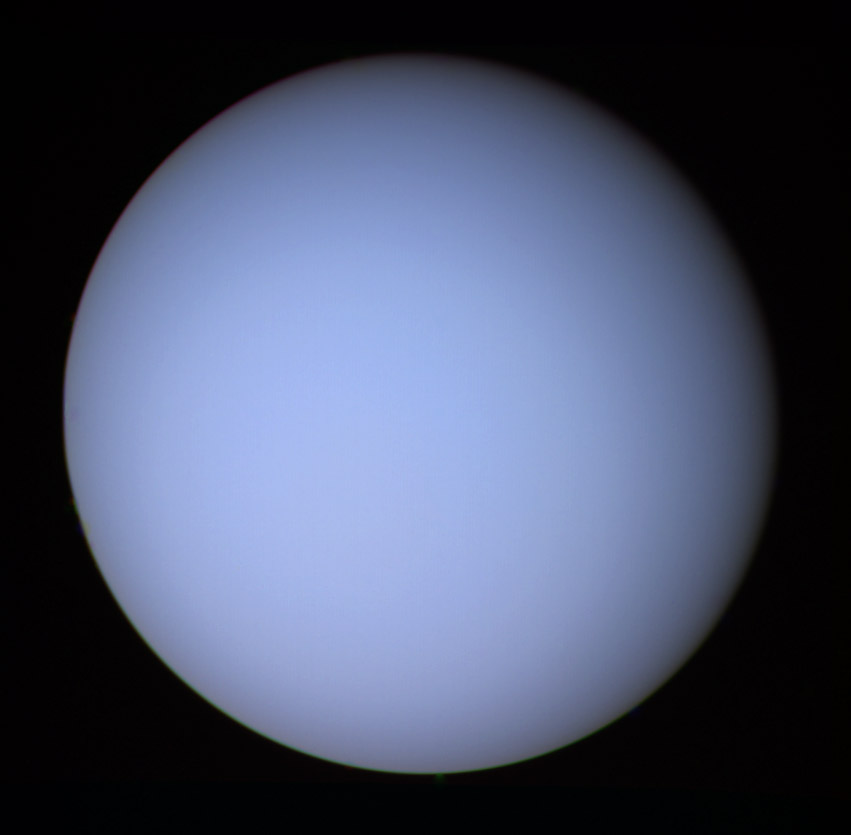[/caption]
The following Uranus fact sheet is based on NASA’s excellent planetary fact sheets. Uranus is the 7th planet from the Sun, and it requires a telescope to be able to see it.
Mass: 86.832 x 1024 kg
Volume: 6,833 x 1010 km3
Average radius: 25,362 km
Average diameter: 50,724 km
Mean density: 1.270 g/cm3
Escape velocity: 21.3 km/s
Surface gravity: 8.87 m/s2
Natural satellites: 27
Rings? – Yes
Semimajor axis: 2,872,460,000 km
Orbit period: 30,685.4 days
Perihelion: 2,741,300,000 km
Aphelion: 3,003,620,000 km
Mean orbital velocity: 6.81 km/s
Orbit inclination: 0.772°
Orbit eccentricity: 0.0457
Sidereal rotation period: 17.24 hours
Length of day: 17.24 hours
Axial tilt: 97.77°
Discovery: 13 March 1781
Minimum distance from Earth: 2,581,900,000 km
Maximum distance from Earth: 3,157,300,000 km
Maximum apparent diameter from Earth: 4.1 arc seconds
Minimum apparent diameter from Earth: 3.3 arc seconds
Maximum visual magnitude: 5.32
We’ve written many articles about Uranus for Universe Today. Here’s an article about the atmosphere of Uranus, and here’s an article about a blue ring around Uranus.
If you’d like more info on Uranus, check out Hubblesite’s News Releases about Uranus. And here’s a link to the NASA’s Solar System Exploration Guide to Uranus.
We’ve also recorded an entire episode of Astronomy Cast just about Uranus. Listen here, Episode 62: Uranus.

